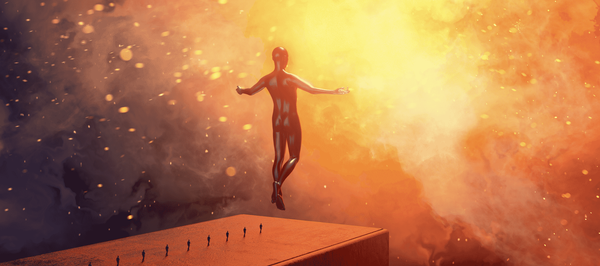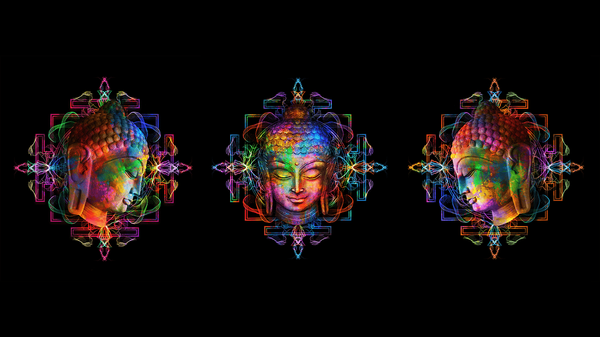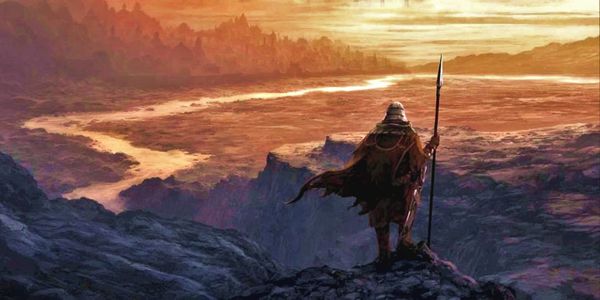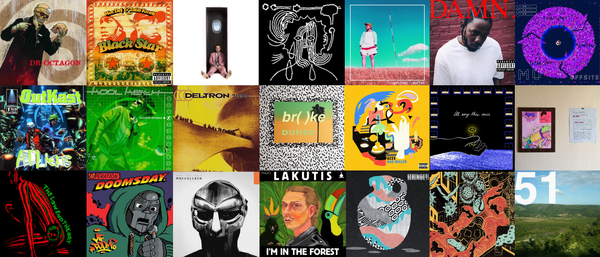Peter Westermann • • 11 min read
Understanding & Growing Your Creative Mind Pt. 1/3

This is a very difficult and abstract topic. Even though it’s one we know well, there is no question the core aspects of this concept are difficult to grasp. Creativity is a foundational and highly celebrated part of our reality and a critical factor of many modern-day careers, passions and hobbies. Many of us desire and celebrate this phenomenon, but the foundational aspects can be elusive. How does one become creative? What is creativity, and how do we build the creative part of our mind? How do people find “flow”? Is it a natural gift or is it something that can be learned? I’m going to try to help you answer some of these questions.
As we wander into this abstract wonderland of thought, we need to prepare to deal with some rather grey areas. There are some aspects we will cover that can seem paradoxical, and discussing these facets in greater detail might help to progress our understanding. Even as I am writing this article I’ve quickly realized that there are very few words in the English language that act as suitable synonyms for the word “creativity”. I feel it’s safe to say the reason is because the topic itself is so hard to clearly define we have difficulty confining it into written form. So be ready for a heavy dose of this word we have made – it seems that I won’t be able to avoid using it over and over again.
It’s worth nothing that as a direct and independent topic of study, the concept of creativity as a whole effectively received no attention until somewhere around the 19th century! To me this gives the topic a great amount of importance. I feel It’s fascinating to think that a character trait we heavily rely on and applaud in others is one that we have somewhat failed to effectively convey to others in a helpful way. So this is my main motivation to write on this topic – there appears to be a need for more exploration.
Unfortunately, I cannot tell you these will be your keys to creativity because it is something that relates to every person in their own unique way. What I’m going to tell you are the patterns and connections I’ve noticed that crossover between many fields that seem to give insights into the nature of creativity. There are many paths to inspiration and only you can figure which is the most natural for your current situation and interests. These are ways to think about your creative mind that may help you discover these paths.
Let’s try and remember a simple point – creativity is in everything! It is not just about painting, or making music, or inventing a new device. It is part of how people speak, in how they act, and how they live their everyday lives. It is in the mathematical, biological and chemical features found in the many forms of life all around us. It is the driving force in our modern world. The very act of reading these transmitted words on your screen is preceded by an impossibly huge collaboration of creativity using technology that not one of us will ever be able to fully comprehend. This is not simply a matter of becoming better in a certain artistry, it is a matter of taking the resources and thoughts present in your own life and using them to reach your full potential.
1) Am I Creative?
Many people seem to feel they are not “naturally creative”. What if your brain doesn’t automatically do things that people perceive as “creative”? Does that mean you cannot improve? Of course not! Creativity – exactly like any other mental function – can be developed. Just as it takes much time, effort and patience to build skill in a sport, an art form or any other activity – the creative mind is something that can be advanced and progressed over time. We must be careful to not have our perceptions of skill and development get skewed by our idea of “the naturals”. People often seem to lose their motivation to create when they wrongfully compare their skills as a beginner to those of someone who has been in a creative rhythm and environment for years, or to someone who has been blessed with a natural gift from the start.
It’s also easy to focus on where someone is and not how they got there, and it’s a mistake we make all too often. When we see the results of an inspired person we are not given a full glimpse into the complex sequence of events and influences that transpired before this creation took place, and thus we have only the results to ponder. Your mission will be to find and build your own complex sequence of events that will coalesce into something potent you can call your own. How do people do this? Everyone’s journey is different.The good news there are an endless amount of ways to grow your own creative potential.
In many ancient cultures such as Greece, India and China, people often lacked the concept of creativity, seeing art as a form of discovery and not creation. I tend to lean towards this field of thought. I believe being creative is about facilitating the most tuned, diverse and open version of your mind possible with the goal of tapping into a flow of making these discoveries. How do you find this flow? You can do it by curating your mind and environment over time. You must change it into one that is conducive to the creative flow.
2) Break Down The Process
Before we can talk about what makes people creative or how to build your own potential, we should probably first discuss exactly what it is we are talking about. How does creativity happen?
Creativity arises in the intersecting and merging of knowledge, thoughts and perspectives. It is a blanket word we use to try to explain the full gamut of an impossibly complex and abstract combination of influences and perspectives and progressions of our existence. It is the combination of all the things you’ve experienced and your current environment actively mixing with your immediate and conscious state of mind. The act of manifestation within your consciousness is a balancing act of your mental totality as it tries to merge with itself and evolve your inner associations and perspectives into something tangible. There are already a few concepts I’m aware of that describe similar phenomenon – such as Metacognition , Divergent Thinking, Lateral Thinking, and Conceptual Blending. I feel all of these concepts are analogous thought-ways to the structure of creative thought. They offer possible ways to define a few of the possible arrangements of thoughts that precede creative results.
This is why creativity itself is so difficult to pinpoint. It is a culmination of so many facets that the act of any one person fulfilling an idea is truly impossible to break down into a complete picture without full knowledge of this person’s entire experiential history and the chemical/biological contents of their brain. We are relegated to coming up with metaphors and more easily digestible ways to think about this complex subject. This really is a rather beautiful aspect about the process. The totality of the experience is always far beyond ourselves in a profound manner, no matter how much we might try to explain and understand. Highly popular creative types often seem to have trouble breaking down their process in detail, and it is obviously for good reason.
When we speak about creativity this way, it turns out it doesn’t actually exist in a tangible or definable form – it only exists because we perceive that it does. We see this complex collection to be something we call “creative”. We have given it a special and singular name because we have perceived the results of the phenomenon.
If we could for a second – let’s think of a mental creation as many pieces of a massive puzzle culminating into a complete picture. The knowledge, thoughts and perspectives in your brain are the millions of puzzle pieces that you’ve collected over time. Your active consciousness and will to search for ideas or find new pathways is the hand that moves the pieces. If you do not have a wide variety of puzzle pieces to move around, you will have trouble completing many full and complete pictures. Think of each piece of inspired writing, or human work of art as a piece of an infinitely expansive puzzle that can be assembled in an indefinite amount of ways.
This is why being a diverse person can be critical in striving to be effortless in your inspiration. When you form many bodies of knowledge therein lies exponential opportunities for these mental interactions. Each piece of existence, idea, inspired writing or human creation is a piece of an infinitely expansive puzzle that can be assembled in an indefinite amount of ways. All you need is to find a few of the right pieces….and they can be assembled into something brilliant. This is what many people have done throughout time to great success. The human mind is very much a mirror with the ability to reflect its surroundings in a unique way.
“The superior person uses his mind like a mirror: it accepts all, it reflects all. It receives, but it does not keep.” – Chuang Tzu
Many great artists and creators and intellectual minds from the past are simply the result of their favorite puzzle pieces arranged in a new way. They act as a mirror and reflect this new combination back to us. Some of them wear their influences on their sleeves, and others choose to conceal their sources and try to maintain the illusion. When society sees someone as brilliantly creative and inspired, they mistakenly attribute these things to this one person’s totality because it is a task beyond ourselves to look at the diverse amount of critical influences in play when a complex combination beyond our comprehension is formed that feels new and inspired.
Many great creative types intensely studied the people who inspired them. They didn’t simply find some kind of magical inner creativity that independently cultivated inside, it is almost always a process of learning and development.
This it the truly beautiful thing about the world we live in for someone interested in the creative path in this modern age. The life and ideas of the entire world are ready to apply in your creative journey. Think about where you are at this moment and the place in time you inhabit. Out of the entire history of the human race, none have ever come close to having the amount of resources available at your disposal. Besides the sheer size of our population, I believe this is the reason for the massive explosion that has happened in the creative fields. The world is reacting to itself in real-time and we all now equally have the opportunity to dive in and participate in growing our minds at an exponentially quickening pace.
I’m pretty sure this is what Picasso was talking about when he spoke his famous words – “Good artists copy, great artists steal.” He was talking about stealing the inspiration found within the work, the very source of the creation. It’s right there for us to take if only we figure out how to trace the lines back to the start.
3) Build Your Knowledge and Perspective
Your body of knowledge and your perspective is something you need to build every day, for it is the foundation of your creative mind and the source of your puzzle pieces. For some people, to be creative, they must learn to be creative. One of the core parts of learning to be creative is building these foundations in order to ensure the diversity of your thought processes.
“Your life is something you build every day. You must convince yourself that you have surpassed yesterday. And tomorrow you must feel that you have surpassed today. In this way there is no end to your mastery.” – Bushido, the Way of the Samurai
An important facet to diversifying perspective is constant and direct influence, change and re-adjustment to your mind. When the mind begins to settle in it’s knowledge and perspective it’s ability to grasp inspiration will begin to diminish. Finding new perspective can be a result of constantly forcing your mind into new territory and making it react to something different. This is not to simply say that you must change who you are as a person or anything to that effect – it is simply a matter of pulling your mind far enough in a certain direction that it becomes enriched by something that it can use. Something that fits with you and becomes a key to another door. You need to remember to be open to whatever new perspectives may offer. You are always in control of what you take and use from any source you encounter. This might be a concept that is familiar already – but if nothing else I’d like to stress it even more.
Studies show creativity is often linked to individuals who have been diagnosed with bipolar disorder, schizophrenia, and dissociative identity disorder (also known as multiple personality disorder). Why do I mention this? I feel one possible explanation behind these results could be very useful to our understanding. Because each of these mental conditions causes such drastic and divergent shifts in the individual’s perspective, it allows this person to create more diverse mental interactions. It is believed that these individuals are better at accessing both hemispheres than your average person, allowing them to develop these novel associations at a faster rate. There seems to be parallels to be found in the abilities of autistic people as well. They display traits that seem to show connections and collaborations between parts of the brain that are not typical in most people. Creative innovation seems to enjoy the cooperation between new parts of the brain. Building a mental diversity is a possible way to ensure these connections can begin to form.
Reading is one of the easiest and most accessible methods to bend and stretch your perspective. If you aspire to be an inspired person and you are not reading on a regular basis, you are sorely missing out on a great opportunity. There are many things that you will never experience unless you read them, and the world of genius authors at your disposal have an endless amount of inspired words that will grow your mind’s ability to collaborate with itself. Great books and writings are massive works of art in the form of written language that can become part of your own mental progression.
These can be the core thoughts that will stir your own mind. In a way, when we read, we are only reading what is already inside of ourselves. That is to say, the words that enter your brain are free of any true meaning until you apply your own thoughts and perceptions to them. The act of reading is actively engaging in that the way you receive and process the information is unique to yourself. The words leave so much room for the rest of your brain to create its own collaboration with the ideas on the page.
“The only real voyage of discovery consists not in seeking new landscapes but in having new eyes.” – Marcel Proust
There are endless more ways of taking your mind to new places and in turn influencing your perspective. Websites like StumbleUpon.com specialize in doing nothing but helping you to steer your web browser into new territory. Learning a new skill or language, meditation, traveling, experiencing new artwork, isolation tanks and entheogens are just a few examples of perspective-shifting activities. Don’t discount sports – activities like martial arts that force your mind to learn new movements will also help build these unique neurological pathways. Mastering an activity will help even more. If you know someone who loves to read, ask them for their favorite authors. Read other people’s perspectives about things on an intelligent internet forum like Slashdot.
This underlying point here is very simple. The conscious act of pulling your mind into new territory often precedes the act of your mind manifesting something creative. I cannot tell you in which direction your motion of thought must take or what material will be most helpful for you, because this is something everyone must find for themselves. Just as an artist experiments with his artistic style and method, you must experiment with your knowledge and perspective.
This concludes the first part of my series! Next week we will discuss the concept of being unique and the role of patience. Please feel free to leave your thoughts in the comments – I would love to hear from you all about your own experiences with creativity, and the things in life that have brought you drastic changes in perspective or knowledge.










